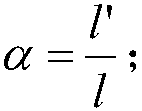Temperature reconstruction method applied to flame light field refocusing imaging
A light field imaging and refocusing technology, which is applied in the field of flame imaging simulation, can solve the problems of low accuracy of temperature distribution and low temperature reconstruction accuracy, and achieve the effect of improving the accuracy of temperature distribution
- Summary
- Abstract
- Description
- Claims
- Application Information
AI Technical Summary
Problems solved by technology
Method used
Image
Examples
specific Embodiment approach 1
[0028] Specific implementation mode one: combine figure 1 To illustrate this embodiment, the specific process of a temperature reconstruction method applied to flame light field refocusing imaging in this embodiment is as follows:
[0029] Step 1: Take pictures of flames with a light field camera and record its light field imaging;
[0030] Step 2: Multi-pixel extraction of the light field imaging to obtain the sub-aperture image, and obtain the light field refocusing image of the flame according to the sub-aperture image;
[0031] Step 3: Using wavelet threshold transform to denoise the light field refocused image to obtain a denoised image;
[0032] Step 4: Using the Lucy-Richardson deconvolution method to restore the noise-reduced image to obtain the restored noise-reduced image;
[0033] Step 5: Obtain the temperature of the reconstructed flame according to the corresponding relationship between the gray scale of the restored noise-reduced image and the black-body radia...
specific Embodiment approach 2
[0034] Embodiment 2: The difference between this embodiment and Embodiment 1 is that in the first step, the flame is photographed by a light field camera and its light field imaging is recorded; the specific process is:
[0035] According to the known flame temperature and radiation physical conditions, the three-dimensional flame and layered flame are simulated and generated, and the flame is photographed by the light field camera and its light field imaging is recorded;
[0036] Such as figure 2 As shown, the light field camera is composed of a main lens, a microlens array and a CCD imaging screen, wherein the microlens array is composed of a large number of tiny lenses arranged between the main lens and the CCD imaging screen. A certain light emitted by the flame passes through the main lens of the light field camera and forms an image on the imaging surface of the virtual main lens. Traditional cameras generally set an imaging screen on the imaging surface. But the light...
specific Embodiment approach 3
[0041] Embodiment 3: The difference between this embodiment and Embodiment 1 or 2 is that in the step 2, the multi-pixel extraction of the light field imaging is performed to obtain a sub-aperture image, and the light field refocusing image of the flame is obtained according to the sub-aperture image;
[0042] The multi-pixel extraction method is defined as sacrificing the angular resolution of the light field camera, that is, extracting more than one pixel from the CCD pixels covered under each microlens to obtain sub-aperture imaging, and then refocusing at this time to obtain higher resolution. The spatial resolution of , called multi-pixel extraction method.
[0043] The specific process is:
[0044] Such as figure 2 As shown, according to the microlens arrangement order, sm*sn pixels are extracted under the CCD imaging area m*n covered by each microlens of the light field camera, and the number of microlenses of the light field camera is M*N, so each sub The number of ...
PUM
| Property | Measurement | Unit |
|---|---|---|
| Light wavelength | aaaaa | aaaaa |
Abstract
Description
Claims
Application Information
 Login to View More
Login to View More - R&D
- Intellectual Property
- Life Sciences
- Materials
- Tech Scout
- Unparalleled Data Quality
- Higher Quality Content
- 60% Fewer Hallucinations
Browse by: Latest US Patents, China's latest patents, Technical Efficacy Thesaurus, Application Domain, Technology Topic, Popular Technical Reports.
© 2025 PatSnap. All rights reserved.Legal|Privacy policy|Modern Slavery Act Transparency Statement|Sitemap|About US| Contact US: help@patsnap.com



